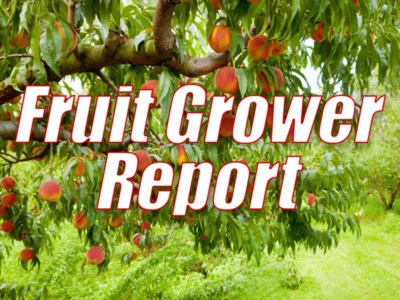Cover crop spacing
For more than a decade, University of Idaho Extension Educator Steven Hines sought an answer for Magic Valley farmers in need of a short-season crop to plant after harvesting corn silage for additional livestock forage.Planting in late September, however, the days were simply too cold and short for anything to grow.
At long last, Hines, of Jerome County, believes he’s found a simple and cost-effective solution to raise bonus forage for fall and spring grazing without forgoing a commercial silage crop.
Better still, his research shows his approach improves soil health and may even boost corn silage yields.
Hines recently finished crunching the numbers from the final year of a three-year study evaluating a system of leaving more space between rows of silage corn and subsequently planting cover crop seed blends in those gaps, thereby lengthening the growing season for the cover crops to produce forage.
In his trials in Kimberly, Hines used a four-row planter, with corn rows in tight pairs. The pairs were spaced either 44 inches or 60 inches apart, compared with standard 22- or 30-inch row spacing.
Hines also grew check plots with rows spaced 30 inches apart and no cover crops interplanted.
Cover crops are grown primarily to improve soil health, but producers are also looking for additional grazing opportunity.
The cover crop mix included radish, clover and annual ryegrass, which survived the winter and provided both “soil armor” to prevent erosion and additional forage for potential spring grazing.
Though he assumed competition from the cover crops would reduce corn yields, he bet that he’d still come out ahead with interplanting based on the value of the forage.
To his surprise, interplanting only improved silage yields in trial plots with 44-inch row spacing.
“I really see the producer who would adopt this as somebody who is looking for additional forage or somebody who is looking for soil health benefits,” Hines said.
Hines is still unsure as to why silage yields were greatest in fields with 44-inch row spacing, compared with rows spaced 60 inches apart, as he anticipated silage planted in wider rows would benefit from more sunlight.
Nonetheless, in 2020, 44-inch spacing yielded 35 tons of silage per acre, compared with 30 tons per acre from the 30-inch-spaced check plots and 27 tons per acre from 60-inch spacing.
His results were consistent in 2021, when 44-inch spacing yielded 36 tons per acre of silage corn, compared with 35 tons per acre from the check plots and 32 tons per acre from 60-inch spacing.
In 2022, 44-inch spacing and the 30-inch check both yielded 37 tons of silage per acre, compared with 32 tons with 60-inch row spacing.
“The 44-inch spacing has been able to meet or exceed the standard 30-inch check,” Hines said. “We certainly thought there was potential for yield drag with cover crops competing with the corn.”
The 60-inch spacing yields a bit more cover crop dry matter than narrower rows, but Hines believes the extra silage from the 44-inch spacing makes it the most profitable scenario.
Hines started testing a version of the approach several years ago working with a Raft River dairy.
The dairy operator raised corn for his dairy cows, aerially seeding the field with a cover crop blend when the corn plants were about a foot tall to provide additional forage for his beef herd.
However, the corn crop’s growth stunted the development of his cover crop.
“Through reading about various practices with cover crops I noted a practice in the Midwest where they were planting on wider rows,” Hines said. “Part of that is to get more sunlight to the cover crops.”
For his recent trials, Hines planted the corn each season during the second week of May and used a fertilizer spreader to aerially broadcast cover crop seeds into the large gaps during the third week of June.
He’s shared his results with several colleagues and has yet to find a clear explanation to explain them.
His best guess is that the diversity of plant roots in interplanted fields has created ideal conditions for beneficial mycorrhiza fungi in the soil, supporting the silage by making additional nutrients available.
“We proved we can do it and maintain yield, but boosting yield on the 44-inch centers? I’m still trying to figure that out,” Hines said. “One of the reasons we decided to do it a third year was to make sure that 44 inches wasn’t an anomaly. Something is going on here, increasing yield and giving us a graze-ready cover crop coming off the field.”













